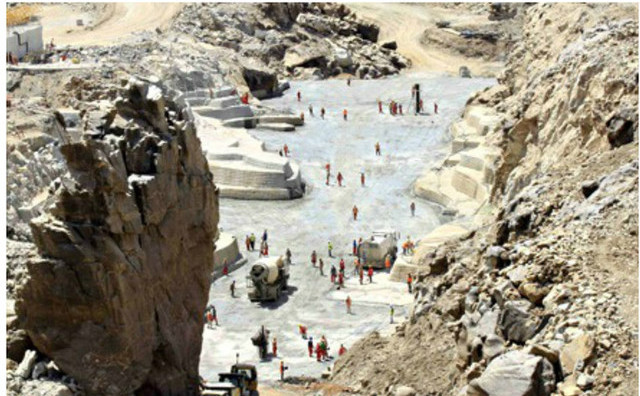 Labourers work at the Grand Renaissance dam in Guba Woreda, Ethiopia. (Photograph: Reuters)
Labourers work at the Grand Renaissance dam in Guba Woreda, Ethiopia. (Photograph: Reuters)
By Emeline Wuilbercq
Monday 14 July 2014
The 4×4 roars off, kicking up a cloud of dust. With one hand on the wheel, the other stifling a yawn, Semegnew Bekele could do this trip with his eyes shut. A construction engineer, he has driven down this track at every hour of the day or night over the past three years. “Ordinary people are building an extraordinary project,” he says. He is referring to the Grand Ethiopian Renaissance dam (Gerd), in the north-west corner of the country close to the border with Sudan. Four hours away from the town of Assosa more than 8,500 workers and engineers are labouring on a massive project to harness the waters of the Blue Nile.
The site is closely guarded. Only officially authorised vehicles are allowed through the three checkpoints. As the kilometres flicker by, the din of the diggers becomes more audible. Then the gigantic site itself appears, with thousands of tonnes of aggregate piled up and smooth expanses of concrete lining the bottom of the Guba valley, ringed by arid hills. The hundreds of families belonging to the Gumuz indigenous people, who lived off fishing, have been moved to a location several tens of kilometres away, making room for a hydroelectric power station that will be the largest in Africa when it comes online in 2017. At present only a third of it has been built.
Bekele, who works for the Ethiopian Electric Power corporation, has already worked on two dam construction jobs, both on the river Omo in the south-west. He answers our questions with a flood of figures: the dam will be 1,780 metres long and 145 high, with a reservoir covering 1,874 sq km expected to contain 70bn cubic metres of water. Output from the 16 turbines will total 6,000MW. It will be sufficient to meet growing demand in Ethiopia, now Africa’s second most populous country, where gross domestic product is estimated to have grown by 10.5% annually over the past five years.
Read the full story at The Guardian »
—
Join the conversation on Twitter and Facebook.

























